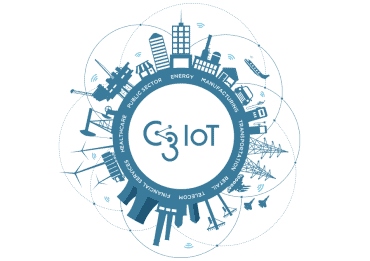
Becoming an AI-first organization requires that businesses today get foundational digital transformation right.
If you have any reservations about the future being AI-first, just look around you. From personalized Netflix recommendations to Alexa making jokes, AI has become integral to our lives. It is helping us understand the world better, make more informed choices, and create more value with fewer resources. And it’s the same for businesses. Experts estimate that by 2030, AI could deliver an additional global economic activity of around $13 trillion. The explosive debut of Generative AI has only amplified this impact.
Businesses are rushing to harness the power of AI and embed it at the core of their operational DNA. Yet, the road isn’t without its challenges.
What’s holding you back from becoming an AI-first business?
1) The need to navigate disruptions constantly
Disruption is no longer a single pivotal event but a continuously moving storm that comes out of nowhere. Unable to weather the onslaught, companies are dying younger. AI dynamics will further accelerate the pace of change, further complicating the probability of success. Generative AI will match human competencies by this decade’s close, much earlier than anticipated.
Companies that can harness the AI potential are widening the performance gap, delivering dramatically superior results than those still playing by the old rules. These digital leaders have, according to BCG, amassed a staggering $9.3 trillion in shareholder value in a mere five years. However, for the unprepared, this same wave of change threatens obsolescence. The challenge for businesses? Delivering disruptive growth and innovation while adapting on the go to turbulence. And not just surviving but thriving in the face of unyielding disruption.
2) Suboptimal tech investments
Companies often make hasty decisions in a race to adopt new technology, creating a complex web of outdated legacy systems alongside cutting-edge platforms. This blend of old and new systems, stemming from fragmented strategies and the fear of high replacement costs, cripples the harmonization of people, processes, and data. By prioritizing short-term gains from digital investments and giving in to the cost-saving mindset, organizations miss out on the transformative potential of AI, inadvertently stifling innovation, agility, and long-term growth.
3) Scaling beyond initial POCs
Seventy percent of companies do not scale digital solutions beyond the pilot phase. While the experimental spirit must be applauded, these organizations lack the right approach to scale digital across the enterprise. Financial limitations, operational complexities, strategic oversight, technical glitches, and an innate aversion to change become formidable barriers. As a result, while companies are experiencing small wins in pockets, they are unable to transform end-to-end user journeys for massive gains. What’s more, the inability to scale digital across the enterprise is eroding competitive advantage and making companies vulnerable in the face of disruption.
4) The trap of organizational siloes
Evidence suggests a staggering 20-30% annual revenue loss for organizations is due to enterprise silos. Choosing not to scale beyond the pilot phase either perpetuates or fails to address existing organizational silos. People, processes, data, networks, and old and new technologies working in isolation obstruct the free flow of data and information, restricting the ability of the company to achieve true digital dexterity. The resulting inefficiencies can be costly, leading to duplicated work, decision-making delays, and untapped synergistic potential impacting the bottom line and competitiveness.
5) Data management and data quality
Data is the backbone of any AI system and also its Achilles heel. Just as DNA mutations can be detrimental, incomplete, impure, or irrelevant data can skew AI insights, leading to flawed decisions. Unfortunately, most companies struggle with data management and quality issues and are unable to collect and consolidate the right data and create a single source of truth for AI.
See also: SMBs Face Challenges Adopting AI, Automation, and More
Cultivating the right approach to thrive in an AI-first world
AI’s transformational power is redefining what’s possible, leaving the linear shift by the wayside to pave way for entirely new business models. However, to make this possibility a reality, businesses today must focus on getting foundational digital transformation right.
Leading businesses have proved time and again that successfully navigating through a transformation journey not only future-proofs the enterprise but also leads to financial outperformance. That is the case with becoming an AI-first business. Having seen Global 2k enterprises traverse this journey from close quarters, we have realized that successful enterprises take a fundamentally different approach to transformation.
- They start with a customer-first or business-first approach rather than a technology-first approach. “Transformation” is key, not just “Digital.” They focus on impactful user journeys, using technology to enhance them. They value ecosystem collaboration, human-centric connections, and use contextual insights for transformation.
- They envision a “Hands off the wheel” state where humans design and systems operate. Instead of cost cutting, they focus on leveraging technology to augment human potential. At the same time, they seek to drive high degree of straight through processing on core journeys and business processes.
- They don’t mistake bite-size digital gains for a successful enterprise-wide transformation. They put in place an operating model that helps them scale the transformation and become a connected enterprise. These leaders take a platform approach to not just unify a basket of technologies but also the approach to investment decisions to navigate continuous technology changes. They don’t use digital; they become digital.
Disruptions demand revisiting the way we see and approach the world. An AI pivot and embracing an AI-first approach will require more from companies than just a technological shift. It calls for a radical reimagination of their existing structures and workflows. To adapt what these leaders are doing, companies need an AI-first, platform-based approach that can integrate a fragmented landscape to set the foundations of a Connected Enterprise.






























